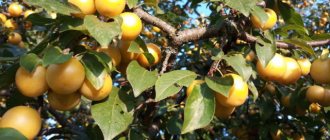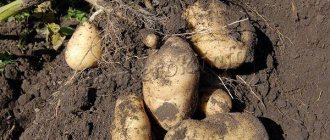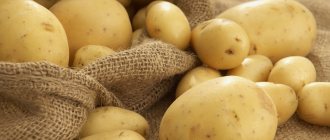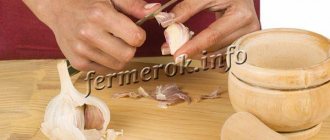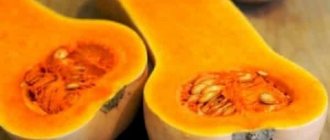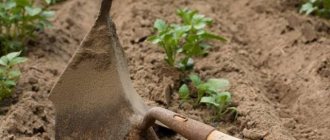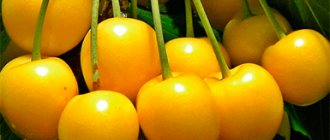Table of early ripening of plum varieties
In the table, varieties are classified according to ripening time:
| Early ripening (July – early August) | Mid-season (August) | Late ripening (end of August – September) |
| Zarechnaya | Smolinka | The president |
| Kabardinskaya | Bogatyrskaya | Bluefree |
| Aprimira | Imperial | Gigantic |
| Chachakskaya | Soviet Renklod | Angelina |
| Nenka | Renklod Kharitonova | General's |
| Precocious | Favorite from Mliev | Renclod white |
| Honey yellow | Kazanskaya | Ochakovskaya yellow |
| Morning | Red meat | Immune |
| Firefly | Romain | Top Hit |
| Starting | Souvenir of the East | Grossa di Felicio |
| Common Hungarian | Joy | |
| Eurasia | Enchantress | |
| Peach | La Crescent | |
| Egg blue | Stanley | |
| Cromagne | Adyghe prunes | |
| Yakhont | ||
| Ballad |
Now let's learn more about each variety.
Preventive treatment of trees
With the onset of spring, it is necessary to carry out sanitary measures on the site. Trees must be treated against common diseases. In addition, it is necessary to destroy pests with larvae that could survive the frost. Such work contributes to obtaining a good harvest.
If there are wounds on the trunk of a plum tree, they should be thoroughly cleaned, then washed with a disinfectant (in this case, 3% copper sulfate works well) and covered well with garden varnish.
Plum General's description and photo
Plum is one of the most common summer fruits. There are many varieties of plums, so you can choose a seedling to suit your taste.
Description of the variety
The Generalskaya plum tree is quite compact at an early age.
- The variety belongs to medium-sized trees. This fact should be taken into account when choosing a place to plant a seedling. The crown of the tree is dense and spreading, so there should be enough space between neighboring seedlings (3-4 m).
- This plum variety is classified as self-sterile, so planting pollinating trees is required to obtain a harvest. Ural red and Moscow Hungarian are recommended as varieties capable of pollinating the Generalskaya plum.
- It is advisable that several plum trees of different varieties, but blooming at the same time, be planted in the area. This promotes better pollination and the harvest will be larger.
Peculiarities
Generalskaya blooms for the first time in the third year after planting as an annual seedling.
Therefore, return frosts do not threaten flower buds. The variety is fast-growing, because you can enjoy the first harvest within three years after planting the seedling on the site.
Fruit
The rounded fruits are quite large; each plum weighs about 40 g. The peel has a pleasant bright orange color. A bright pink or cherry-colored blush is noticeable on the sides. The skin is dense.
Productivity
Plums ripen late. Harvest occurs in September. The fruits are not prone to shedding; after ripening, they stay on the tree for a long time. When pruning, it should be taken into account that fruiting occurs on spurs and last year's growth.
pros
Having planted the General plum in your garden, in just a few years you will be enjoying delicious fruits.
- large-fruited;
- high yield;
- frost resistance;
- the versatility of the fruit and its delicate taste;
- low maintenance requirements.
and cons
the need to plant pollinator varieties;
To plant several varieties of plums at once, you need a large plot of land, which can be solved in fruit farms, but in a private garden it can become a problem.
Requirements for planting and care
The optimal place for planting is the sunny side of the site, protected from the north wind by a high fence.
It is best to postpone planting the General's plum until spring. Autumn planting in the northern regions is associated with the risk of seedlings freezing
When planting in autumn, attention is paid to covering the seedling. Without mulch, covering material and spruce branches, the tree may freeze
Step by step planting process:
- The hole is dug in advance. This can be done in spring or autumn, there should be a week before planting.
- The diameter of the pit is 75 cm, the depth is about 70 cm.
- Small stones are poured into the bottom of the hole - gravel, broken bricks, eggshells are added.
The minimum thickness of the drainage layer is 10 cm.
To prepare the nutrient mixture you will need two buckets of humus.
The pit filled with nutrient soil is left for sedimentation.
The plum seedling is tried on the root collar, and if necessary, soil is added to the mound.
When the water is absorbed into the soil, check the location of the root collar. If necessary, add fertile soil on top.
The tree trunk circle can be covered with fallen leaves.
Watering
Dry summers require uniform watering of trees. In spring and early summer, water is necessary for the growth of new shoots and the appearance of ovaries. If there is not enough moisture, the ovaries begin to crumble. If the summer is dry and watering is insufficient, the fruits form small and, not reaching the required size, fall off.
For watering, make a groove along the outer diameter of the tree trunk circle; there is no need to flood the tree trunk.
According to general feedback from gardeners, in arid regions it is recommended to grow a rootstock of thorns, onto which plum material is grafted. Teren has good resistance to drought.
Excess moisture is also harmful. High humidity leads to cracking of plums, and trees can suffer from fungal diseases.
How to plant a tree on a plot
For planting, you must first select a suitable site, a healthy cutting, and prepare the land for planting.
Required soil composition
General plum is unpretentious to the composition of the soil, but excessive acidity should be avoided. For best growth, it is necessary that groundwater flows at a depth of 1.5-2 meters.
Selection and preparation of a site
When choosing a seedling, you should pay attention to its general condition. There should be no damage, signs of rotting, dried branches, as well as weak and undeveloped roots.
Before planting, the area should be cleared of other crops and weeds that may interfere with the growth of the plum tree.
Dimensions and depth of the landing pit
To plant a crop, you need to make a hole 80 centimeters deep and wide. Fertile soil from the surface should be set aside, and the pit should be fed with mineral fertilizers.
See also
The best way to feed plums in summer and fertilizer calendar
Read
Terms and rules for planting fruit crops
It is better to plant in the autumn, a month before the start of winter, so that the cuttings have time to adapt to new conditions. When disembarking, follow the following procedure:
- Place a support stick in the hole so that it is 50-60 centimeters above the ground surface.
- Pour some fertile soil and humus into the hole.
- Place the cutting in the hole and straighten the roots.
- Fill the hole with the remaining soil.
- Tamp down and water the plant with warm water.
- Tie the sprout to a stick.
The nuances of seasonal plum care
The plum variety in question is not too demanding to care for.
Seasonal plant care includes a set of activities:
- watering;
- feeding;
- pruning;
- preparation for winter.
Regularity of watering
The first watering is carried out in May-June - 40–50 liters per tree. If there is sufficient precipitation during this period, then additional moisture will not be required.
Subsequently, 4–5 waterings are carried out throughout the summer, depending on weather conditions:
- during the formation of the ovary;
- 3 weeks after the first watering;
- 3 weeks after the 2nd watering at the time of formation of the seed in the fruit;
- during the fruiting period.
The last watering is carried out a week after the fruits are removed. During fruiting, the rate of water application is 4–5 buckets for young plants and 7–8 buckets for adult specimens. Watering can be carried out at the root from a bucket or watering can or using an automatic irrigation system.
Important! Plums are moisture-loving crops. With a lack of moisture in the soil, the formation of small berries with low quality indicators is observed.
Fertilizer application
Plants are fed 3 times throughout the season:
- at the stage of kidney swelling - urea (70 g/10 l of water) or 10 l of liquid mullein, diluted in a 1:1 ratio with water;
- at the stage of ovary formation - wood ash at the rate of 800 g/1 m² of the trunk circle by embedding into the soil or in combination with water for irrigation;
- a week after harvesting - 400 g of superphosphate dissolved in water for irrigation.
Pruning rules
The first plum pruning is carried out in the spring a year after planting. In the first year of life, trees do not yet branch, so at this stage you can determine the height of an adult plant by simply cutting off the main trunk at a height convenient for the farmer. It is optimal to leave the height to 1.5 m. This will facilitate the work of harvesting and further caring for the plant.
In the second year, the plant already has side shoots. Of these, you should select the 3 most developed ones and shorten them to 25–30 cm. The cut should pass along the lower bud so that the branches grow to the sides and not upwards.
Sanitary pruning begins from the third year of the tree’s life.
In the third year they are engaged in the formation of the second tier. Shoots growing in the upper part of the crown are shortened to a length of 30 cm, and lateral annual growths are shortened to a length of 15 cm.
Subsequently, throughout the entire season, starting in March, sanitary pruning is carried out, which involves the removal of branches that thicken the crown, as well as those that are mechanically damaged or killed by frost.
To carry out pruning manipulations, you can use pruning shears. Before carrying out the procedure, the instrument should be well sharpened and disinfected in alcohol. At the end of the procedure, all sections must be treated with garden varnish.
Wintering plum
The Angelina plum tolerates frosty winters well. The main thing is to prepare it correctly. The first stage of preparation begins with watering after harvesting with a one-time application of fertilizing. After a few days, the soil is compacted and mulched with peat (3 cm), then a layer of compost (4 cm) is laid.
To a height of 0.5 m from the soil level, the trunk is whitened with lime. As soon as snow falls, make a mound of it around the trunk to a height of 30 cm.
Until the age of 3 years, the trunks of young plants are wrapped in burlap or agrofibre for the winter.
Important! If a young plum has produced a shoot that is competitive with the main one, it should be cut out
What is characteristic of culture
A characteristic feature of the Generalskaya pear variety is frost tolerance and average resistance to dry periods. The plant has increased immunity and is not susceptible to most diseases and parasites that affect other crops. For fruit set, additional pollinator plants are needed, which will coincide with the flowering period of the General plum.
Size and annual growth
The tree is considered low growing. The maximum height that the Generalskaya plum can reach is 2 meters. Most gardeners classify the crop as a shrub rather than a tree.
Radicio salad - description, benefits of Radicio leaves || The benefits and harms of Radicio salad
In one season, the plant grows by 20-40 centimeters - this figure may vary depending on weather conditions, the quality of crop care and the frequency of feeding.
Fruiting
The variety bears fruit relatively early: the first fruits begin to appear 4-5 years after planting the tree.
The harvest amount for this type of plant is high and can reach 30-40 kilograms in one season.
Flowering and pollinators
The variety begins to bloom in mid-spring. The crop requires additional plants for pollination. For this procedure, it is better to select a plum with the same flowering period. Otherwise, pollination will not work. For this task, it is enough to plant the Red Uralskaya variety next to the Generalskaya plum.
Ripening time and harvest
The period of full fruit ripening is long and ends in the first half of September or the end of August. The harvest should be harvested quickly, as the fruits begin to fall over time.
Productivity per tree
The variety has a high yield: in one season you can collect from 30 to 50 kilograms of fruit from a tree. This indicator may vary depending on the weather and how carefully the plant is cared for. The plum is medium in size and weighs 40 grams.
Tasting assessment and scope of fruit application
Tasters rate the taste qualities of Generalskaya plum at 4.6 points out of 5 possible. The fruits have moderate sweetness and a sour aftertaste characteristic of this culture. The plum pulp is juicy and quite dense. For this reason, it can be transported over long distances and stored for several weeks on end without spoiling the product.
Confectionery products, compotes, jams, prunes are made from plums of this variety, consumed raw, and put up for sale.
Susceptibility to diseases and parasites
The Generalsky plum variety rarely gets sick and has increased immunity to most diseases and pests that affect other crops. For preventive measures, the plant should be periodically treated with fungicides. Such spraying will protect the tree from diseases:
- gray rot;
- spotting;
- rust;
- Cytosporosis.
Frost and drought resistance
The variety is suitable for growing in severe frost conditions. The culture easily tolerates cold temperatures down to -40 °C without prior preparation. Some experts believe that the tree can withstand even frost of -50 °C. Due to its characteristic feature, the plant can easily cope with drought. The root system absorbs excess moisture, which can be used when there is a lack of water.
Early fruiting plum
Belongs to the Chinese variety, the variety was bred by Russian specialists. It is cultivated by Siberian and Far Eastern gardeners; it grows well in the middle zone. The tree is low-growing, the crown is spherical.
The first fruits appear in the 3rd year, but fruiting is irregular. The highly frost-resistant variety can withstand temperatures down to -40°C, and the buds are not afraid of spring frosts. The root collar can wither away, but only in those areas where frosts give way to thaws in winter. The plant is also drought-resistant.
For pollination, Red Shar plums and Russian, a hybrid cherry plum, are planted. The fruits ripen in early August. They are medium in size up to 28g with thick yellow skin. An orange or red blush forms on the sunny side. The pulp is yellow, juicy, sweet and sour with a melon flavor. Plum is resistant to diseases and rarely suffers from pest attacks.
Subtleties of care
General plum is not a variety that requires careful care. The main requirement is to ensure adequate irrigation with an increase in water volume in the summer months. Here it is important not to overdo it and not to flood the tree, otherwise the root system will begin to rot.
Plum Kuban Comet
The variety is frost-resistant; some plants can tolerate temperatures down to −50°C.
Helpful information. Despite such a useful quality as frost resistance, young seedlings will need reliable shelters. Plums develop good resistance to low temperatures only after 4 years.
Pruning is necessary to get rid of old and diseased branches. Additionally, root shoots are removed to increase yield. General plum is propagated by cuttings and grafting.
Trees need to be fed every year, and it is best to use organic fertilizers (manure, humus). The immune system of this variety is very good, and therefore diseases and attacks by harmful insects are very rare. However, gardeners advise carrying out preventative measures to avoid unnecessary problems.
Cherry plum 'General'
Main genus: Cherry plum
| Density and character of the pulp |
| Fruit size |
| Fruit shape |
| Fruit color |
| Winter hardiness |
| Decoration of plants and fruits |
| Flower size |
| Brush characteristics |
| Berry/truss separation |
| Nut kernel size |
| Blush (cover color) |
| Fruit pulp color |
| Density and character of the pulp (fruit/bush/yag) |
| Fruit aroma |
| Frost resistance (fruit/bush/yag) |
| Drought resistance (fruit/bush/yag) |
| Beginning of fruiting after planting |
| Ripening period (fruit/bush/yar) |
| Consumer maturity |
| Productivity (fruit/bush/yag) |
| Fruit shedding |
| Remontant |
| Self-pollinating/self-fertile |
| Purpose of fruits (fruit/bush/yag) |
| Taste of fruits (fruit/bush/yag) |
| Soil pH requirements (fruit/bush/yag) |
| Shelter for the winter (fruit/bush/yag) |
| Soil type (fruit/bush/yar) |
| Disease resistance (fruit/bush/yag) |
| Resistance to pests (fruit/bush/yag) |
| Habitus (fruit/bush/yag) |
| Growth form |
| Crown density |
| Thorns, thorns |
| Vitamin content (fruit/bush/yag) |
| Keeping quality of fruits (fruit/bush/yag) |
| Cultivation region by origin (fruit/bush/yar) |
Expand all properties
Description of the plant:
Cherry plum 'General' is a seedling from free pollination of the 'Obilnaya' variety. Obtained at the Donetsk Experimental Horticulture Station. Authors: L.I. Taranenko, V.V. Pavlyuk, V.V. Yarushnikov. New promising variety.
Recommended for testing in the southern gardening zone.
Dimensions and growth form:
Cherry plum 'General' is represented by tall trees. The crown is broadly pyramidal.
Flowers and fruits:
The fruits are very large, 40-50 g, round-oval in shape. The skin is dark red.
The pulp is bright yellow. The skin is pink and dense. The taste is very good, sweet and sour, with moderate acidity and a pleasant aroma.
Precocity, ripening time, yield:
The early fruitfulness of Cherry plum 'General' is assessed as average. The variety is universal. Mid-late ripening. Productivity is high.
Winter hardiness:
Increased winter hardiness. Drought resistance is good.
Profitable and practical
The photo clearly shows how good the ripe fruits are. Rest assured: you won’t be disappointed in their taste either! But how capricious is the tree, does it need special care? Is it profitable to grow it in the garden? I came to the conclusion: if there is space, it’s definitely worth planting this plum tree.
The descriptions I've seen online say a lot about the quality of the harvest. But it is rarely mentioned that the trees themselves are short, which makes them easier to harvest and care for as they grow.
Disease resistance is average. To prevent trees from becoming depleted, it is necessary to trim the basal shoots in a timely manner and correctly form the crown.
Let me summarize: all the arguments are in favor of growing general’s grass in the garden. In my opinion, the main disadvantage is the need to plant pollinators at the same time. But if you love fruits, prepare supplies for the winter, or grow produce for sale, this variety is what you need!
What do you think, dear amateur gardeners? Particularly interesting is the description of the process of growing plums in different climatic zones. I look forward to your activity in the comments and social networks. With this I say goodbye, thank you for your attention to my publications.
Olga Fateeva
Early ripening varieties
This variety is a gift from the Far Eastern selection. The compact, small-growing tree bears large fruits weighing 40 grams. every. The color of the skin is bright orange, with a red blush. Juicy, tender pulp with amazingly beautiful veins and an apricot flavor makes it ideal for consumption “right off the tree,” and in unlimited quantities. When fully ripe, plums do not fall off for a long time and hold tightly to the branches.
The taste qualities of Generalskaya are much higher than even some southern varieties. The tree is extremely winter-hardy; according to some data, it can withstand short-term frosts down to -50 °C. However, there is one drawback - a high yield can only be expected if there are several pollinating varieties nearby, the best representative of which is Ural Red.
Plum Orange honey
A very high-yielding variety, in some years they get 70 kg per tree. Large bright yellow round fruits weigh 30-35 grams and are covered with a waxy coating on top. The bone is effortlessly separated from the pulp, which has a pleasant dessert taste.
The height of mature trees is from 3 to 5 meters, the oval crown is slightly raised. Orange honey is resistant not only to drought, but also to viral and fungal diseases: clasterosporiosis, gray rot. At the same time, the variety is characterized by high frost resistance of flower buds, abundant yield, and excellent fruit quality.
Peach plum
An old variety that produces irregular but abundant harvests. The best pollinators are Hungarian, Renklod Altana. Medium-sized trees bear fruit after planting in the fifth year. Large rounded plums weigh 35-55 grams, the skin is green-yellow in color with a thick orange-scarlet blush and dark dots.
The transparent, tender flesh of a reddish-yellow color has a sweet peach taste with the slightest sourness. In ripe, aromatic fruits, the stone is separated. The variety is characterized by average frost resistance, but has excellent resistance to polystigmosis. Some gardeners note the tendency of wood to ripen. In good years, you can get 50 kg of plums from a mature 15-year-old tree.
Plum Yakhontovaya
Partially self-fertile variety, but it is better if Hungarian and Skorospelka red grow nearby. A large tree up to 5.5 meters high regularly produces high yields - approximately 45 kg of large, very tasty and beautiful fruits. The advantages include high drought resistance, winter hardiness, immunity to viruses and fungi.
The average weight of bright yellow plums is 35 grams, they have a slight blush and are covered with a thin waxy coating. The juicy fruits are uniform and the medium-sized seeds are easily separated. The yellow-greenish pulp has a sour-sweet, delicate taste. Yakhontovaya is suitable for home preparations.
Flowering and pollination
The Generalskaya plum variety is early ripening. The first flowering is observed in three-year-old seedlings in mid-spring and continues until the end of May. To obtain a harvest, you will need a pollinator, for which the Red Shar, Russian, and Ural Red varieties are suitable.
When planting seedlings nearby, care should be taken to ensure that the trees do not shade each other in the future.
The fruits take a long time to ripen - the first ripened fruits appear in mid-September, not earlier. However, the plums hold tightly and fruit shedding is almost zero. The harvest can be stored on the branches until frost.
Description of the variety
Breeders did not work on breeding columnar trees; they appeared absolutely naturally, as a result of mutation. In the middle of the twentieth century, one of the American gardeners saw in his garden an interesting branch on a McIntosh apple tree. Its diameter was much wider than that of other apple tree branches, and the direction of growth was also unusual - absolutely vertical. But the most surprising thing was that the incorrectly growing branch was extremely productive, which made it compare favorably with other branches of this apple tree.
The gardener set out to get a separate tree from this branch, which he succeeded in (about a couple of years). The new variety of fruit trees was small in size, had a columnar crown shape and produced large yields. The creator gave the columnar apple tree the name Leader. This form of trees has gained great popularity among gardeners, so work has been carried out to select and create other fruit trees of the same shape.
The branches of the tree are presented in the form of fruiting spears and ringlets, which during the fruiting period are densely covered with fruits. The Blue Sweet variety is popular among gardeners due to its juicy and large plums, the average weight of which exceeds 50–75 g. The plum skin is colored dark purple, almost black. , has a bluish waxy coating. Blue Sweet fruits have the shape of a flattened ellipse and characteristic dark pink dots under the skin, slightly different from the main color of the pulp (yellow or pink). The taste of the fruits of this variety is very high; the juicy pulp has a sweet taste with a slight sourness.
There is a small seed inside the fruit, which can be easily peeled from the fruit pulp. Blue Sweet plums can be eaten either fresh or used to make juices, jelly, and compotes. Housewives also make preserves, jams and confitures from them for the winter.
Did you know? Trees are the longest-living living organisms on planet Earth and never die of old age, they only die from diseases, pests or at the hands of humans. For trees, there is an “Old List”, this is an analogue of the “Red Book”, which is an official database of living ancient trees, their species and location.
Mass ripening of the harvest of this variety occurs approximately in the second ten days of August. The plant is small, the height of an adult plum does not exceed 2.2 m, the width of the crown occupies a space of up to 1 m. The shape of the crown resembles the shape of a pyramidal poplar. Columnar plum is a very compact plant that is easy to care for. A person of average height can easily harvest a crop from a low tree. During fruiting, the branches of Blue Sweet are practically covered with fruit; over the summer, several buckets of ripe fruit (12–15 kg) can be collected from a mature plum.
Mature trees of this variety have a constant yield, without reducing the number of fruits after a year, as happens with old tall varieties of plums. The reason for the high yield is that fruit set on the ringlets occurs alternately.
Good taste and marketable fruits are the hallmark of this variety; in addition, plums are well transported during long-distance transportation
It is also important that in a small garden you can plant up to a dozen low-growing columnar trees that are not too demanding to care for and are convenient for harvesting without special equipment
It is also fortunate that you do not have to wait several years for the harvest; fruiting begins in the second year of the growing season. Sometimes our country experiences very cold winters, and the high frost resistance of the Blue Sweet variety plays an important role in this case. This variety cannot pollinate itself, so it is recommended to plant plums of other varieties nearby (for example, Stanley or Blue Free).
Did you know? Just like people, trees need water to survive, and they drink a lot of it. In one day, a large tree can pull up to 200 liters of moisture from the ground and release it into the air in the form of oxygen and water vapor.
Advantages and disadvantages of the variety
- The advantages of plum are:
- high frost resistance;
- drought resistance;
- early onset of fruiting;
- maintaining stability of fruiting for 20 years;
- high and stable yield;
- good taste;
- high commercial properties of fruits.
There are no disadvantages noted in the variety, with the exception of abundant growth that needs to be destroyed. Rather, we can list its features. Thus, compact trees are not intended for industrial cultivation of plums - their yield is not too large for this. But this property is an advantage for a private garden. It is convenient for you to harvest and it is convenient to process such a volume of fruits.
Description and distinctive features of plum Anna Shpet
Anna Shpet plum is a vigorous, lush pyramid-shaped tree. Its trunk is smooth and even. The foliage is oval, slightly elongated, with a pointed tip and jagged edge; has a light green color. The variety blooms with snow-white small flowers with a bell-shaped calyx and medium-sized oval petals.
Did you know? The plum came to Russia under Tsar Alexei Mikhailovich in 1654: at first the tree grew only in the Izmailovsky Royal Garden, then it appeared in other gardens. The plant began to be grown en masse at the end of the 18th century.
Large fruits weigh on average about 45 g, they are oval, covered with a waxy coating. The peel is dark purple, sometimes with a brick tint, dense but thin. Ripe plum pulp is golden in color, slightly transparent, with a fibrous structure, juicy. The taste has a slight sourness. The pit, like the peel, comes off easily.
Features of cultivation and care
The general plum variety is easy to grow and practical. The bushes are compact, easy to care for, and there are no great requirements for soil composition. It develops and bears fruit better on fertile, loose soil. Like all plums, it loves sunny areas not shaded by buildings and tall trees.
It is recommended to plant generals' seedlings in the spring. Planting the plant in late autumn, especially in northern areas with low winter temperatures, may not be successful. Seedlings that do not have time to take root well die. Insulation is required if the tree is planted in the fall. Fallen leaves and fabric covering materials are suitable for shelter.
It's worth thinking about the pollinator. When purchasing general plum seedlings, you need to look for a tree of the Ural Red variety, or any other variety that blooms in the same period as the general plum. Dig a large hole for planting. For good development of the root system, a depth of 0.5 meters and a diameter of 0.8 meters are sufficient.
Pick up a stick or stake 1.5 high and hammer it into the central part of the hole. While the tree grows and strengthens, the stake will serve as an additional support and will prevent damage to the fragile trunk and branches from gusts of wind.
If the soil in the garden is fertile, you will not need to add fertilizers and organic matter, but if it is already depleted, increase the fertility with two or three buckets of humus or compost. Water the seedling well after planting. Regular and sufficient watering is the main requirement that must be met when caring for this variety of plums. Don't forget about fertilizers either. There are many ready-made products on sale for seasonal feeding.
The first three years, carry out insulation while the young tree’s immunity is still quite weak, and frosts can harm it. In the third or fourth year, the plant becomes stronger and, due to its genetic frost resistance, will endure winters without shelter. In the third year after planting, plan the first fertilizing with nitrogen fertilizers at the beginning of summer and potassium fertilizers from the middle to the end of the growing season.
Proper care will give results in the future. Once the plum begins to bear fruit, it will delight you with a rich harvest of tasty, aromatic fruits. Pruning is the main method of care. Branches that are damaged, dry and leading to thickening of the crown are cut out. The basal shoots typical of plums should be cut out regularly. Leaving it, significantly reduces the volume of the harvest.
Experienced gardeners recommend propagating vegetatively: by grafting, cuttings. It is not worth conducting an experiment by growing from seeds (seeds); experience shows that this is not an effective propagation method for this variety.
Even a novice gardener can grow a strong, productive tree. All that requires draining is:
- watering;
- pruning;
- feeding;
- insulation of seedlings up to three years of age.
Plum Columnar
This type of plum appeared in our country several decades ago. But it was “to the taste” of many gardeners. Its main difference can be considered an extremely narrow crown - 80 cm. Columnar plum varieties are convenient to plant in small areas, since they do not have spreading branches. But such plants have a significant drawback - they cannot tolerate low temperatures.
The columnar plum does not have a large number of varieties.
The most famous:
- Imperial (pink fruit)
- Mirabelle (yellow berries)
- Blue Sweet (purple fruit)
These are small trees, about 2 m high, producing up to 16 kg of fruit. They can be used both fresh and for jam, jam, etc. Fruiting begins at the 3rd year of life. Productivity is growing every year.
Imperial
- Bred by Russian breeders. It has not yet become widespread in our country. Low-growing trees do not grow higher than 2.5 m. They do not tolerate drought, but are frost-resistant.
- The low height of the plants makes them easier to care for. They require virtually no pruning and the harvesting process does not require the use of a ladder.
- In areas with cold winters, young seedlings require additional shelter.
- Its fruits are round in shape, weigh 45-60 g. They are formed a year after planting in a permanent place. The thick peel is colored in different shades of pink and purple. But there are also specimens of a darker color. Inside they are yellow, juicy, and pleasant to the taste.
- Fruiting occurs in mid-August. One plant produces 10-12 kg of berries. They do not immediately fall off the tree, so you can collect them gradually.
- "Imperial" can be transported and stored in an unprocessed state for up to 1.5 weeks. The quality of the fruits makes it possible to prepare compotes, preserves, and jams from them.
Honeysuckle: description of 19 popular varieties, their diversity and features, how to distinguish poisonous fruits (35 Photos & Videos) + Reviews
Harvest and storage
The harvest will ripen on the tree. Plums cannot ripen when picked. Ripe fruits are easily separated from the branch. Collect them in a container and store in the refrigerator or cool place for 2-3 weeks. The fruits cannot be stored longer. They soften and begin to rot.
We advise you to read why plums rot on trees and what needs to be done.
When choosing a variety to grow, pay attention to the General plum. She has quite a lot of positive qualities. And most importantly, she is completely unpretentious in care. Therefore, grow plums using preventive measures in time, and you will be assured of an excellent harvest.
Reviews
I believe that low-growing fruit trees are convenient to grow in our northern latitudes. I don’t trim the crown of the general plum, but I protect my tree from pests and whitewash it. Sasha, Omsk
I heard that the general plum does not pollinate well. This is not entirely true. If there are other varieties of plums nearby, pollination will take place. Lyudmila, Barnaul.
I will give advice to new gardeners. In winter, shovel snow under the trunk. In the spring, as soon as it begins to melt, rake it away. The tree will be protected from the cold, but at the same time it will not rot. Vladimir, Tyumen.
What care does the general variety need?
In order for a plum to please with its fruits, it is necessary to observe the watering regime, prune the branches, fertilize and spray.
Irrigation and fertilizing
The general plum loves moisture; it is watered every day during the dry period of summer; when the temperature drops, watering is reduced to 2-3 times a week.
Fertilizing is carried out with nitrogen-containing fertilizers from the age of three. Manipulation is carried out in early spring and autumn. While the plum is young, fertilize it with natural organic compounds.
Spraying
For prevention, spraying is carried out three times in the spring. For this, copper sulfate 3% solution and urea are used. Spraying is carried out in March, April and May. The timing varies depending on the typical weather conditions of the growing region.
Crown formation
Plum is demanding when it comes to pruning dried branches. Thinning needs to be done quite often. Basal shoots are removed as they reduce the fruiting of the plant. The plum spends its energy on the development of additional shoots, reducing the nutrition of the fruit. When the branches grow densely, they are thinned out so as not to interfere with the development of the fruits.
Caring for the attachment wheel
There are new shoots growing around the trunk that need to be pruned. For the extension circle, insulation is formed for the winter to protect the roots from frost. This is especially necessary for young trees.
Preparing for winter
The plum shows its high resistance to frost three years after planting. Young specimens are covered. The root part of the trunk is wrapped in moss when the first frosts appear. After snow falls, the moss is trampled down, creating a tight fit to the tree.
General plum is unpretentious in care. A pollinator is required for the formation of ovaries. Plum produces a large number of fruits, which are widely used in the household. They have a large number of useful properties, as well as pleasant taste. This plum variety takes root in all regions of the country and is resistant to frost, drought and typical diseases.
Pests and diseases
The variety is resistant to hole spot, but is not immune to brown spot. The disease affects the leaves, on which dark yellow spots form. The foliage dries up and falls off. To combat, the affected leaves are plucked and destroyed. The tree is sprayed with 1% Bordeaux mixture.
Brown spot (Coccomycosis)
Coccomycosis turns the leaves red-brown, forming a white-pink coating underneath. The fungus causes premature leaf fall. The tree is freed from lesions and treated with “Hom” 40 g/10 l.
With moniliosis, shoots and young branches turn brown and look burned. The fruits are covered with rot and gray growths from fungal spores. Damaged parts of the tree are cut off and destroyed. When the buds open, the plant is sprayed with 3% Bordeaux mixture. Before and after flowering - 1%.
The pest can be avoided by treating wood with Fufanon
Pocketing
Plum pockets are a disease in which the fruit is unable to form a seed. They grow chaotically and become covered with a powdery fungal coating. Affected fruits are collected. Treatment with 1% Bordeaux mixture helps. The procedure is carried out 2 times: during and after flowering.
Pests
Description of the main pests and measures to get rid of them:
- Fruit mite. Browning of leaves, early leaf fall, slow development of flower buds. To fight, the trunks are cleared of old bark. The tree is treated with the Fufanon insecticide before the buds swell, during their development, and during the formation of buds.
- Slimy sawfly. The insect sucks the juice from the leaves, leaving veins. The eaten green parts of the plant are destroyed. During the period when the larvae appear, trees are sprayed with Novaktion and Fufanon.
- Plum aphid. It affects young shoots, weakens leaves, which turn yellow and fall off. During flowering, treat the inside of the flowers and leaves with the Sumition insecticide.

